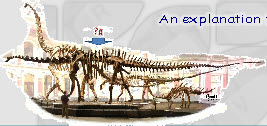


Opponents of the expanding Earth theory almost always agree amongst themselves, “the theory of expansion is dead and buried”. They claim that the assumption of a constant diameter Earth is established fact, so any evidence that contradicts this view must be wrong. Some even go as far as to publicly state that since they know the Earth’s diameter is constant and unchanging, any scientific evidence indicating Earth expansion must be pseudoscience.
Surprisingly, this unscientific argument has even found its way into science publications. In 2014 Paolo Sudiro declared he considered “all evidence for Earth expansion a pseudoscience belief" in one science publication.
Now a new science paper has responded to this declaration by carefully establishing the unscientific nature of the pseudoscience claim to show it is not based on any reality. The new science paper was published in the December 2016 edition of the History of Geo- and Space Sciences, the same periodical where the original pseudoscience claim appeared.
The new paper, Indications from space geodesy, gravimetry and seismology for slow Earth expansion at present – comment on “The Earth expansion theory and its transition from scientific hypothesis to pseudoscientific belief” by Sudiro (2014), is written by Matthew R. Edwards from the University of Toronto, Canada. The new paper is freely available from the History of Geo- and Space Sciences web site.
Surprisingly, this unscientific argument has even found its way into science publications. In 2014 Paolo Sudiro declared he considered “all evidence for Earth expansion a pseudoscience belief" in one science publication.
Now a new science paper has responded to this declaration by carefully establishing the unscientific nature of the pseudoscience claim to show it is not based on any reality. The new science paper was published in the December 2016 edition of the History of Geo- and Space Sciences, the same periodical where the original pseudoscience claim appeared.
The new paper, Indications from space geodesy, gravimetry and seismology for slow Earth expansion at present – comment on “The Earth expansion theory and its transition from scientific hypothesis to pseudoscientific belief” by Sudiro (2014), is written by Matthew R. Edwards from the University of Toronto, Canada. The new paper is freely available from the History of Geo- and Space Sciences web site.
…it is simply prudent for geologists and historians of geology alike to hold off on blanket obituaries of the expanding Earth theory.”
Edwards
Edwards
Share this page
One of the main points raised by Edwards is that Sudiro simply omitted much of the evidence for expansion in general and for slow expansion in particular. Edwards’ reflects that,
“The omission of slow expansion from recent discussions is doubly unfortunate since, for the first time, evidence drawn from space geodetic and gravimetric studies actually provides preliminary evidence of such expansion.”
Edwards provides an extensive discussion on the evidence for present-day slow expansion obtained from space geodetic and gravity field techniques. He also makes the point that although this is a highly complex area of study, the widely reported Wu et al (2011) paper indicating no expansion is “hard to justify” and has been recently criticised by Wen-Bin Shen and his colleagues. I’ve discussed the controversial history of these measurements before.
If I have any reservations about Edwards’ paper, it is surprise that he does not correct Sudiro’s mistaken report that James Maxlow, the Australian geologist, presents an expansion model that predicts the Palaeozoic Earth had increased density and surface gravity. This is a disappointing omission since it would have been a valuable opportunity to correct Sudiro’s factual error by reaffirming that Maxlow’s model predicts a constant density and decreased gravity for a Palaeozoic Earth. Almost exactly the opposite to what Sudiro claimed.
Nonetheless, the bulk of Edwards’ paper provides a wealth of details about the expanding Earth theory. There is a short history of the development of the theory finally culminating in the extensive discussion of the most recent results indicating present-day slow expansion. The references at the end of the paper are comprehensive, although some of the more recent such as science papers published recently in the Geological Society and the Australian Institute of Geoscientists are obviously too new to have been included.
We can readily understand why Edwards has reached the conclusion that,
“recent evidence from space geodesy, gravimetry and seismology indicates that the Earth at present may be slowly expanding at
0.1–0.4mmyr-1. It is concluded that Sudiro’s obituary of the expanding Earth theory as a whole must be considered premature at this time.
…it is simply prudent for geologists and historians of geology alike to hold off on blanket obituaries of the expanding Earth theory. The assessment of Sudiro that all the modern proponents of Earth expansion are engaging in pseudoscience is unwarranted.”
0.1–0.4mmyr-1. It is concluded that Sudiro’s obituary of the expanding Earth theory as a whole must be considered premature at this time.
…it is simply prudent for geologists and historians of geology alike to hold off on blanket obituaries of the expanding Earth theory. The assessment of Sudiro that all the modern proponents of Earth expansion are engaging in pseudoscience is unwarranted.”
Comment on this page
Related Pages
The Geological Society publishes Earth expansion paper
Australian Institute of Geoscientists - Earth expansion
Space Geodesy Measurements
An index of Interesting Publications
Latest News Comments and Updates
A Brief History of the Expanding Earth theory
References
Edwards, M. R. (2016). Indications from space geodesy, gravimetry and seismology for slow Earth expansion at present–comment on “The Earth expansion theory and its transition from scientific hypothesis to pseudoscientific belief” by Sudiro (2014). History of Geo-and Space Sciences, 7(2), 125-133.
Page first created 03 Feb 17
Page last updated 05 Feb 17
Page last updated 05 Feb 17





